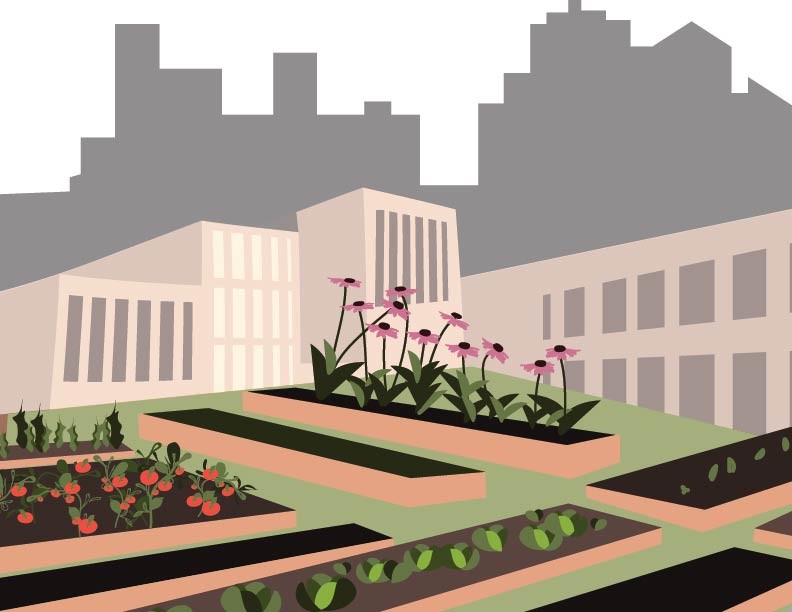The newly active Marcy-Holmes Neighborhood Association environmental committee shared urban farming plans last week that would add to a growing movement of community farming in the Twin Cities.
The urban farming pilot, slated to begin this summer, would allow residents to volunteer land for others to cultivate. Despite being inactive last year, the Marcy-Holmes environmental committee also has several other initiatives focused on improving environmental quality in the neighborhood planned.
Urban farming is something residents have shown an interest in, environmental committee co-chair Cordelia Pierson said.
“In the next month, we need to make progress on identifying land owners and residents and figuring out where plants will come from and what the cost-share structure will be,” Pierson said.
After a resident expressed interesting in sharing her yard space for urban farming, the committee looked to expand the concept throughout the neighborhood. The committee currently has two land spaces that they plan to use for a pilot program.
“I hope to get at least a few gardeners and gardens connected for this summer and get a framework in place for how the process should work,” committee co-chair Nicole Bridgland wrote in an email, “so that it can continue to run smoothly in future years.”
Details of how plants will be cared for and who will undertake the project still need to be solidified, but Pierson said urban farming has the potential to bring the community together.
“I think the biggest thing is that we can only do this with volunteers,” Pierson said. “It really, I think, gives people hope for change, if they can do something tangible and then meet other like-minded people.”
Other community gardens, like those in Southeast Como or the University of Minnesota’s West Bank Community Garden, have been models for this initiative, Pierson said. The West Bank Community Garden student group on campus educated students on natural land use, said co-president Natalie Duncan. She noted the movement of community gardens throughout the Twin Cities.
“There’s a huge disconnect currently between where food comes from and when it’s actually consumed,” Duncan said. “And I think any sort of initiative to get people in the community gathered around a natural space in any capacity … I think that’s a really important step.”
Increasing greenery in the neighborhood, improving air and water quality and improving resident engagement are part of the committee’s mission. The committee has future plans to improve Father Hennepin Bluff Park, add trees and greenery and advise developers on environmental impacts, Pierson said.














